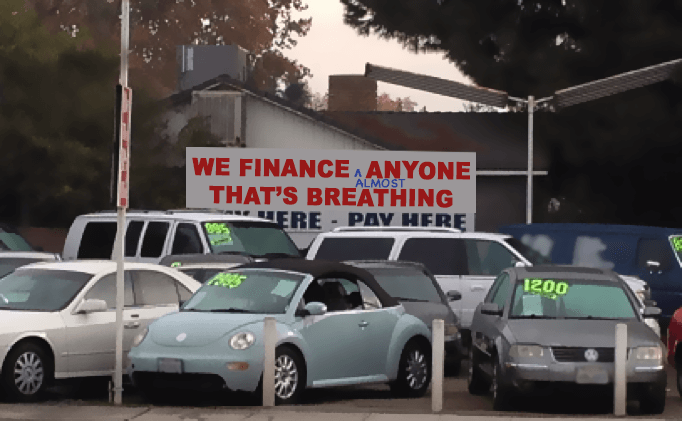During the housing crisis some years ago, banks who were lending to home buyers that clearly could not afford the loan were rightly chastised for what they had done. Along the way, the issue of sub-prime lending got a black eye. It is time we revisit the subject and offer some perspective.
Sub-prime lending has always been with us and the best examples of this type of lending comes from the automobile financing arena. Years ago, before credit scoring, lenders used to label applicants as A, B. C, or D “paper”. In other words, they were grading the quality of applicants based on what they believed to be overall estimates of quality. The “A’s” included what they felt to be gilt edge applicants.
Doctors, CEO’s, SVP’s, or lawyers who made over $500,000 a year, had pristine credit bureau reports, etc. The B’s were lesser employment categories but still had good incomes and good credit. The C’s were normal Joe’s working on the assembly line or had good steady employment, had acceptable credit (maybe a few blemishes) and acceptable income. The D’s were a lower quality. Fair to poor credit histories or employment categories deemed higher risk (seasonal workers like construction trades) – lower incomes etc. Below this level were deemed “sub-prime” and it was meant to include all other applicants who had major credit issues.
These measures of quality were also used by lenders outside of the automobile trade and became the normal way of quantifying credit applicants. When credit scoring was introduced, many lenders continued the practice and just said scores from 800 to 850 were A’s, 750-800 were B’s etc. For years we tried to educate lenders that scores were a much finer tool, a scalpel if you will, than the course ax they had been using to define credit quality.
While the dividing line for sub-prime may change from lender to lender, we are most often talking about applicants who score less than 650. Sub-prime lending or sometimes referred to as near-prime or non-prime (to be a little kinder in designations), are characterized by little or no credit history (younger applicants), no assets (mostly renters), or possibly excessive debt or high debt ratios. So in short, sub-prime credit is riskier and as a result the interest rate for these applicants is higher. If a lender can get the balance right, in terms of the old axiom of balancing risk and reward, it is as true in this type of lending as any other. But, you need to get the balance right.
For some kinds of applicants who fall into this category, such as younger applicants, the potential reward is even bigger. If you can identify the better quality young applicant, you will have a customer for life and they will be loyal to the bank that gave them their first loan or credit card. You will have booked this customer BEFORE they make their major purchases in life, like a home.
Also true are the customers who had some difficulties in the past and have a dented credit report. Unlike other problems, this bureau report will haunt them for 7 years or more before recovering. In fact, they may well have recovered already but the bad credit history keeps them out of the mainstream. Again if you can identify the better quality applicants in this group, you have the potential for some very profitable business. As Tom Hutchens of Angel Oak Mortgage said “They are not bad people – they had a life event”.
Special sub-prime scorecards have been built in the past to try and identify the best of the worst and used along with some key rule based strategies. There are a number of lenders specializing in this type of lending. For example, “Sub-prime lender Springleaf Holdings has agreed to spend $4.25 billion in cash to buy Citigroup’s subprime consumer finance arm”. Obviously they must know something in order to invest that kind of capital.
However, not everyone agrees that a return to sub-prime lending is a good idea. John Horvat, writing for the Blaze, said “The new subprime lending is disturbing. Such a trend represents what might be called the “frenetic intemperance” of the times when sound economics is sacrificed to shorten gains.” This may be true, however, it is not like the sub-prime mortgage crisis of 2008 was the only time these kinds of loans were made. It might have been the first time these types of loans were packaged up and sold as investment quality instruments.
The fact remains that there are passable applicants out there with a need for your financial products and you can make a decent return on your investment if you use empirical and sensible controls.


